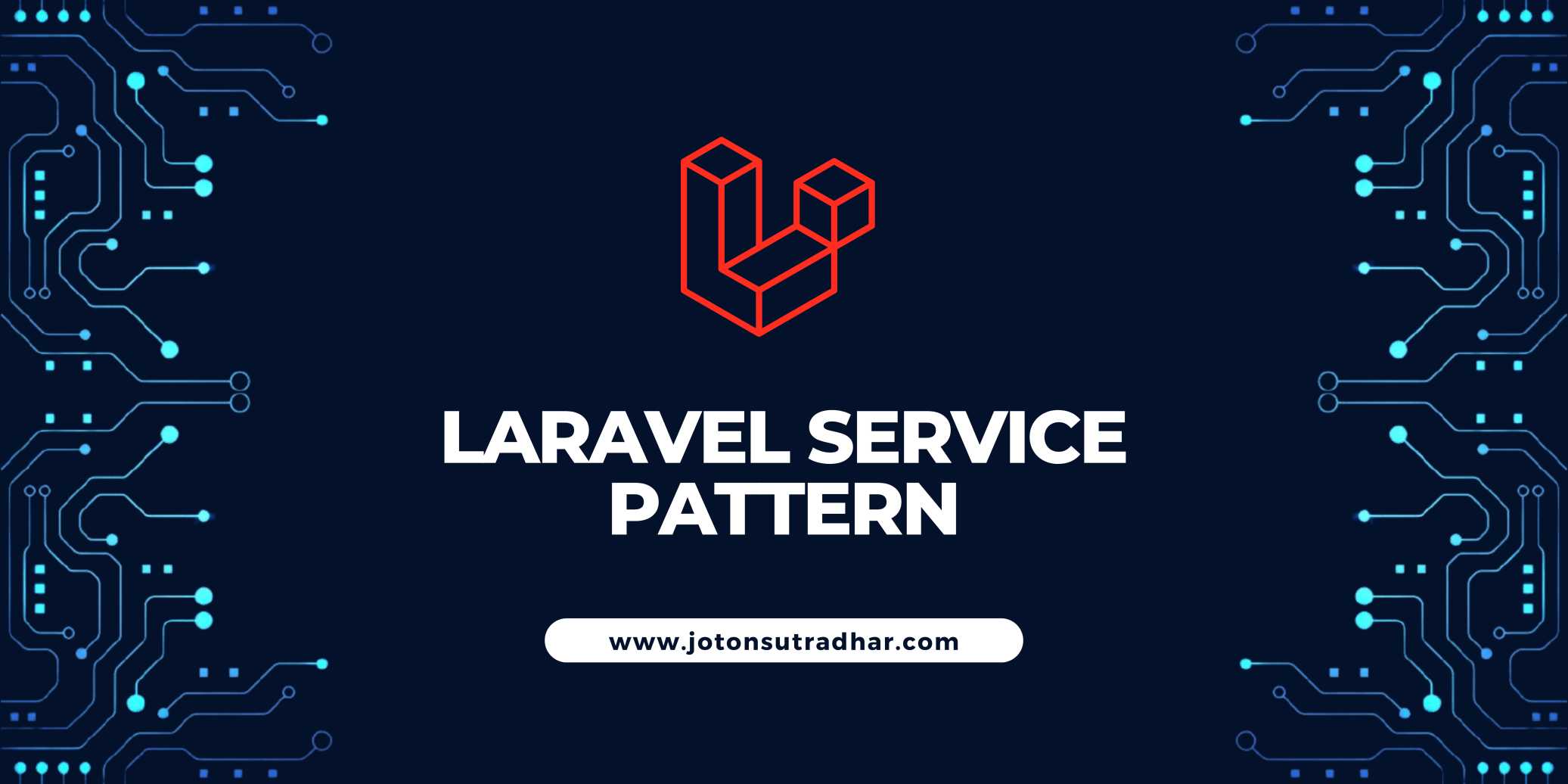Mastering The Laravel App Service Pattern

As your Laravel application grows, keeping your code organized becomes more important than ever. A bloated controller quickly becomes hard to read, test, and maintain. One of the best solutions to this problem is using the Service Pattern — a pattern that helps separate your business logic from your controllers.
In this blog, we'll dive deep into how to implement the Service Pattern in Laravel. We’ll walk through the folder structure, build a real-world example with custom Form Requests, and show how the service layer improves code clarity and maintainability — all without using a Repository.
🧠 What is the Service Pattern?
The Service Pattern is a design principle where you offload complex or reusable business logic into a Service class. This keeps your controllers clean and your application logic in one place, making it easier to test and reuse.
✨ Why use the Service Pattern?
-
Separation of concerns: Controllers handle requests, services handle logic.
-
Testability: You can write unit tests for service methods easily.
-
Reusability: Use the same service in multiple places.
-
Cleaner Controllers: Easier to read, maintain, and debug
📁 Folder Structure
To organize your service logic effectively, here’s a commonly used folder structure:
app/
├── Http/
│ ├── Controllers/
│ │ └── AuthController.php
│ ├── Requests/
│ │ └── RegisterUserRequest.php
│
├── Services/
│ └── Auth/
│ └── RegisterService.php
│
├── Models/
│ └── User.phpThis structure:
-
Places each concern in its own folder
-
Makes it easier to scale and add features
-
Keeps logic modular and traceable
💡 Use Case: User Registration
Let’s say we’re building a simple user registration feature. We want:
-
Validation using a custom Form Request
-
Business logic inside a Service
-
A clean, readable controller
🧾 Step 1: Create a Custom Form Request
We’ll use Laravel’s FormRequest to handle validation cleanly.
File: app/Http/Requests/RegisterUserRequest.php
namespace App\Http\Requests;
use Illuminate\Foundation\Http\FormRequest;
class RegisterUserRequest extends FormRequest
{
public function authorize(): bool
{
// Can add authorization logic here
return true;
}
public function rules(): array
{
return [
'first_name' => 'required|string|max:255',
'last_name' => 'required|string|max:255',
'email' => 'required|email|unique:users,email',
'password' => 'required|string|min:8|confirmed',
];
}
}Here:
-
authorize()lets us control access (e.g. based on roles). -
rules()defines the validation logic.
When you use this in a controller, Laravel auto-validates the request.
⚙️ Step 2: Create the Service Class
This class will handle all the registration logic.
File: app/Services/Auth/RegisterService.php
namespace App\Services\Auth;
use App\Models\User;
use Illuminate\Support\Facades\Hash;
class RegisterService
{
public function register(array $data): User
{
return User::create([
'first_name' => $data['first_name'],
'last_name' => $data['last_name'],
'email' => $data['email'],
'password' => Hash::make($data['password']),
]);
}
}Now all business logic — such as password hashing, user creation — lives here. It’s reusable and easy to test.
🎮 Step 3: Use Service in Controller
Now, let’s call our service in the controller. This keeps the controller clean and focused on handling HTTP.
File: app/Http/Controllers/AuthController.php
namespace App\Http\Controllers;
use App\Http\Requests\RegisterUserRequest;
use App\Services\Auth\RegisterService;
use Illuminate\Http\JsonResponse;
class AuthController extends Controller
{
protected RegisterService $registerService;
public function __construct(RegisterService $registerService)
{
$this->registerService = $registerService;
}
public function register(RegisterUserRequest $request): JsonResponse
{
$user = $this->registerService->register($request->validated());
return response()->json([
'message' => 'User registered successfully.',
'user' => $user,
], 201);
}
}Let’s break this down:
-
The constructor injects the
RegisterServiceusing Laravel’s service container. -
The
register()method receives validated data fromRegisterUserRequest. -
It delegates logic to the service, and simply returns a response.
✅ Now your controller is lean, readable, and testable.
🧪 How to Test Your Service
Because your service is decoupled from the controller, you can unit test it easily:
public function test_user_can_be_registered()
{
$service = new RegisterService();
$user = $service->register([
'first_name' => 'John',
'last_name' => 'Doe',
'email' => '[email protected]',
'password' => 'password123',
]);
$this->assertDatabaseHas('users', ['email' => '[email protected]']);
}🧼 Final Thoughts
The Service Pattern is a proven architectural approach in Laravel for building scalable, maintainable apps. It shines when:
-
You need to keep controllers slim
-
You want reusable business logic
-
You want to write better tests
🛠 Summary
| Component | Responsibility |
|---|---|
| Controller | Handles HTTP requests/responses |
| Form Request | Handles validation |
| Service | Handles business logic (e.g. registration) |
| Model | Represents database entity |
📌 Final Tips
-
Don’t use services for trivial one-liners — use them where logic gets complex.
-
Keep services single-responsibility (registering, not registering + sending emails + logging).
-
You can even split services further into job classes, actions, etc., for very large apps.
Happy coding and architecting your Laravel apps the clean way! 🎯
Related Blogs
Integrating payment gateways like Stripe, SSLCommerz, or Bkash is a common need in web development. But if not done right, it can lead to messy, repeated code and poor resource management. In this blog, we’ll explore how to implement a clean, scalable, and reusable payment system using the Singleton Pattern, Strategy Pattern, and Dependency Injection in Laravel.
Alright, Laravel developers, let's talk shop. We love Laravel for its elegance, convention over configuration, and how quickly it lets us build. But as our applications grow, even in a framework as opinionated as Laravel, we can fall into traps: repeating the same logic across different "service" classes, inconsistent data handling, or struggling to manage complex workflows.
Debugging is one of the most crucial skills every developer must master, yet it's often overlooked in formal education. Whether you're a beginner writing your first "Hello World" program or a seasoned developer working on complex enterprise applications, debugging will be your constant companion throughout your coding journey.